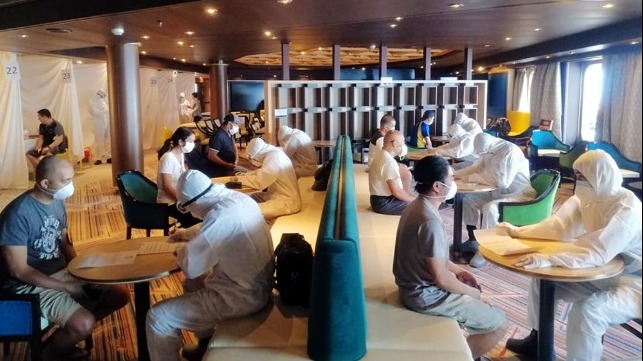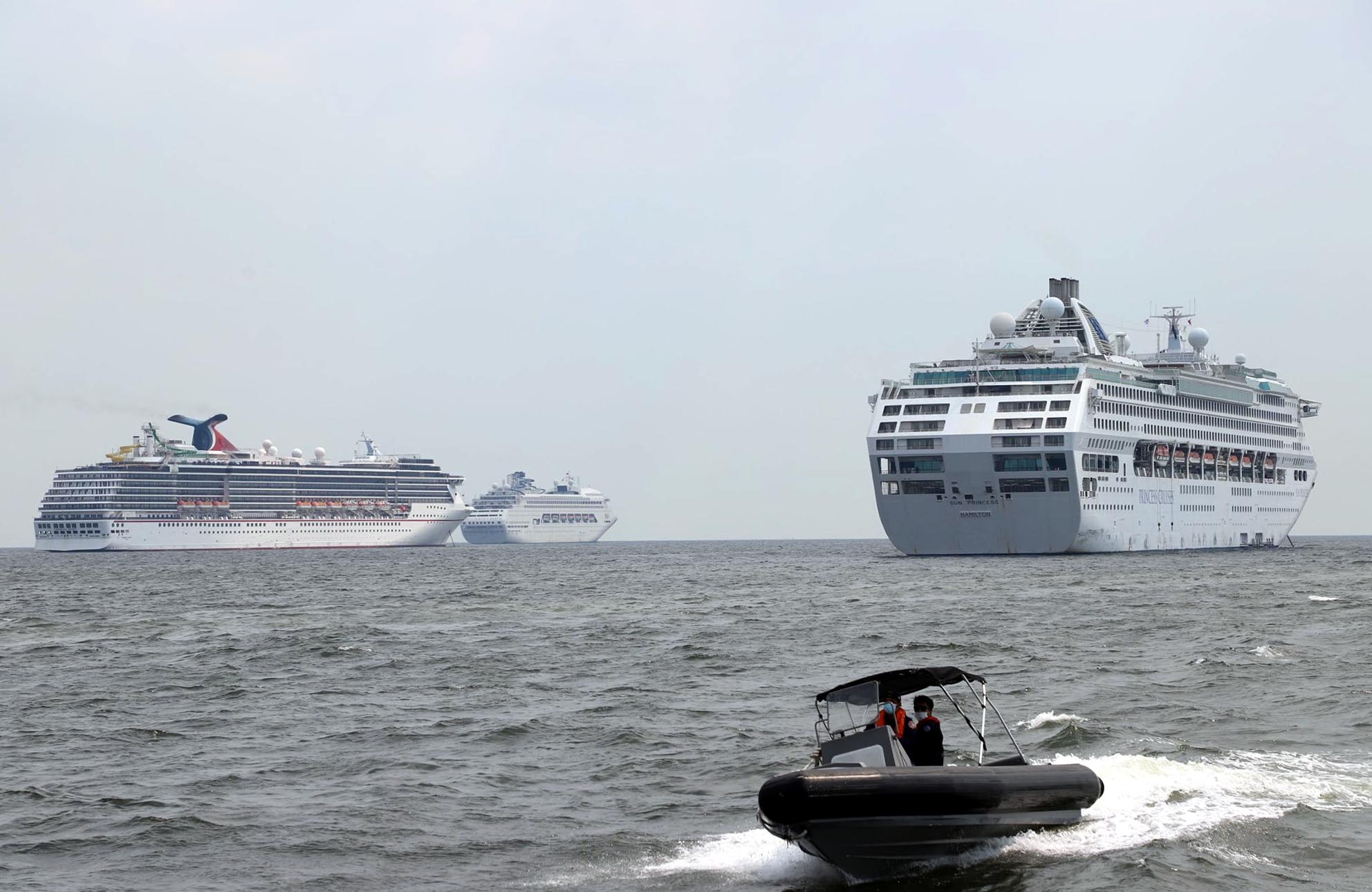CDC Provides Updated Guidance Helping Cruise Ship Crew Reparations

The U.S. Centers for Disease Control and Prevention provide an important update on its guidance for the cruise lines designed to help with the repatriation efforts of crew members during the suspension of service. Coming more than ten weeks after cruise ships stopped sailing, it may be late but it is still expected to help the efforts to return idle crew to their homes.
Most of the information provided by the CDC in its June 1 update continued the earlier advice provided to the cruise lines. According to the CDC, the information is designed to help the cruise lines prevent, detect, and medically manage confirmed and suspected COVID-19 infections, as well as exposures among crew members during periods of suspended cruise ship operations.
The most significant change provided by the CDC is a new color-coded guidance system that established parameters and the level of restriction based on the ship’s current status. The CDC is also saying that it may publish the surveillance data from this system on its website to inform the public.
Individual cruise ships can now earn a “green” status if it has “no confirmed cases of COVID-19 or COVID-like illness for 28 days, as determined by a qualified medical professional.” The ship is also required to limit ship-to-ship transfers of crew to ships with similar status and to quarantine for 14 days any individuals coming aboard from shore to maintain the green status.
The CDC has loosened its restrictions so that crew can now be transferred on commercial transportation if the CDC confirms the ship’s green status, and the ship provides weekly reports to the CDC showing that it continues to not have cases of the virus. However, the cruise line’s executives must still complete a statement attesting to the status of the ship and the transportation arrangements, which has been a sticking point in the past.
Ships will have a “yellow” status from the CDC if it has a suspected case of COVID-19 while the testing is ongoing or if the ship fails to observe the restrictions about crew transfers from other ships or shore. A “red” status will be placed on any ship that has had a case of the virus with 28 days, fails to observe the rules about crew transfers, or does not meet the weekly reporting requirement.
As before, the CDC is requiring charter flights or private transportation for any crew members that the line wants to send home from the ship unless the ship maintains a green status. Again, the attestation is required from the cruise line executives.
The other elements of the guidance continue to focus on the monitoring of crew on board the ships, suggesting that the lines move everyone into single-occupancy cabins with private bathrooms, something most ships did shortly after they disembarked passengers, as well as taking other steps to create and maintain social distancing. The CDC also continues to recommend that crew should have twice-daily temperature checks, preferably self-performed with individual thermometers. Other sections of the guidance address managing cases, isolation, quarantine, and cleaning and disinfection.
While the updates to the policy from the CDC is seen as an important step that may ease some of the bottlenecks to complete crew reparations, the effort may have come too late to significantly change these efforts. Early in the suspension, many of the cruise lines began crew reparations and when the CDC restrictions impeded the efforts the lines sought other means to get crew home.

Cruise ships anchored in Manila Bay as part of the crew reparation efforts - courtesy of the Philippine Coast Guard
More than 20 cruise ships continue to be in Manila Bay working with the local authorities to complete quarantine and testing requirements as the final step to return the crew to their homes in the Philippines. Additional cruise ships are also sailing towards Asia after departing the waters around Florida and the Bahamas as well as Europe. The North American cruise lines transferred crew among their ships grouping them by nationality and dispatching ships to different destinations. Cruise ships have already arrived in Northern Europe, the Mediterranean, and the Caribbean transporting crew to their homes.
While the CDC is now permitting the use of commercial flights, the lack of scheduled flights remains a challenge as well as the restrictions on international travel. It is impractical for the cruise lines to charter planes when they have small numbers of people heading to an individual destination in addition to a multitude of clearances required to conduct these flights.
The change in CDC policy, however, may be good news for the crew that has remained in limbo on the ships. It might be especially helpful with the small numbers of Americans and Canadian staff and crew that had been unable to disembark the ships anchored in the waters around Florida and California due to the CDC’s prior limitations.

that matters most
Get the latest maritime news delivered to your inbox daily.
The CDC continues to refer to this as interim guidance and it only addresses the crew aboard the ships during the suspension. The no sail order remains in effect, currently due to end on July 24, but the CDC admits it has yet to develop any guidance for the cruise lines to manage passengers and the virus while resuming cruises.
The complete CDC guidance for cruise ships can be found on its website.
